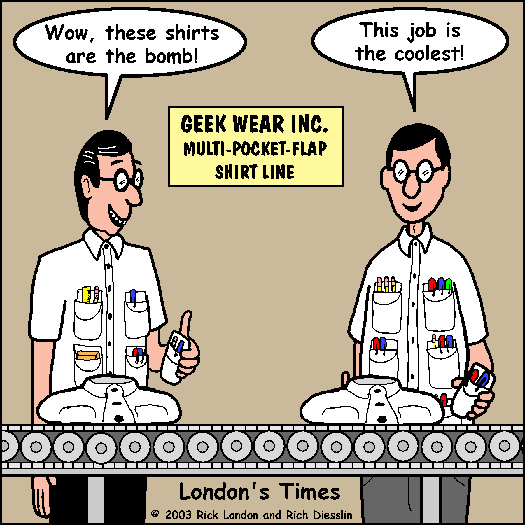 Two of the links didn't work for me. I couldn't get them to open. Checking out the ones that did open made it easier for me to grasp the functions of the cells. I really liked the animations of the meiosis vs. mitosis. The side by side comparison really emphasised the similarities and differences.
Two of the links didn't work for me. I couldn't get them to open. Checking out the ones that did open made it easier for me to grasp the functions of the cells. I really liked the animations of the meiosis vs. mitosis. The side by side comparison really emphasised the similarities and differences.Tuesday, August 7, 2007
Cell Biology
 Two of the links didn't work for me. I couldn't get them to open. Checking out the ones that did open made it easier for me to grasp the functions of the cells. I really liked the animations of the meiosis vs. mitosis. The side by side comparison really emphasised the similarities and differences.
Two of the links didn't work for me. I couldn't get them to open. Checking out the ones that did open made it easier for me to grasp the functions of the cells. I really liked the animations of the meiosis vs. mitosis. The side by side comparison really emphasised the similarities and differences.Mitosis vs. Meiosis
 The website with the flash thingie was cool. It was interesting to be able to see the comparison side by side for the different kinds of cell division. I also thought it was interesting that it described how meiosis in female sex cells result in one large cell and a small one that just disintegrates. That's weird and I wish they would have shown that in the animation. It said that the majority of the cell plasma goes into the large cell and the small one just fades away. That's very interesting.
The website with the flash thingie was cool. It was interesting to be able to see the comparison side by side for the different kinds of cell division. I also thought it was interesting that it described how meiosis in female sex cells result in one large cell and a small one that just disintegrates. That's weird and I wish they would have shown that in the animation. It said that the majority of the cell plasma goes into the large cell and the small one just fades away. That's very interesting.Cells and TCM
Tuesday, July 31, 2007
Spike's Gallery
 I think this one was my favorite. I love seeing all the little internal organs and networks. All of the pictures are really beautiful. I would like to have several of them displayed in my home. Because the subjects are so small that we don't see them on a regular basis, it makes them very abstract. You could spend a huge amount of time looking at the images and see new things in them all the time. Some of the pictures easily show creatures that are obviously alive. They are very animal in form. Others, you know that they have life, but it's harder to connect that with what you are looking at.
I think this one was my favorite. I love seeing all the little internal organs and networks. All of the pictures are really beautiful. I would like to have several of them displayed in my home. Because the subjects are so small that we don't see them on a regular basis, it makes them very abstract. You could spend a huge amount of time looking at the images and see new things in them all the time. Some of the pictures easily show creatures that are obviously alive. They are very animal in form. Others, you know that they have life, but it's harder to connect that with what you are looking at.
CELLS!

Cells are so cool. They are so complex, so simple. Reflections of us and of our surroundings. I love looking at the different kinds of cells and seeing in them elements of the macrocosm. Like the virus cell that looks like space shuttle, or the plant cells that are like little buildings. It reminds me of fractals, how they can be similar the smaller and smaller you see them. The aspects of the cell contributing to the aspects of that which they make up. All very interesting.
Diversity

Let's see. The most obvious species in my environment are humans. There are two in my house. We share the house with a dog and two cats. Those animals are hosts for the occasional fleas and once in a blue moon, tapeworms. I'm sure there are lots of mites around, living off of shed skin. In the kitchen, towards the end of the week, fruit flies can be seen hovering above the compost container. Larger house flies can sometimes be seen about the house. We have bamboo, chenille plant, avocado tree, citrus tree, apricot tree, plum trees, a group of random succulents, a china doll tree, honeysuckle, palm tree, olive tree, strawberry plant, rosemary, mint . . . . grass . . . and all sorts of ants and slugs, snails, worms . . . molds and fungi live in and around the compost . . . sometimes those huge, um, potato bugs can be found when digging in the dirt, or worse . . .half a potato bug eewwwww!
Tuesday, July 24, 2007
Biochemistry


Growing Brains . . .

My first thoughts are of the amazing possibilities. There are many degenerative brain diseases, not to mention brain damage, that I would think that those affected by such things would greatly benefit from having that option available to them.

After that I start thinking about what that means. I know that in Chinese medicine we know that the brain is not the location of the mind. I can't help but associate the mind with the brain. Because of that, I wonder if there is any mind that comes with these manufactured brain bits. If not, does the fact that it is not your brain alter you, the mind that is you? I think therefore I am? I don't really get how that works. Do we rewrite the program, like a blank disk? 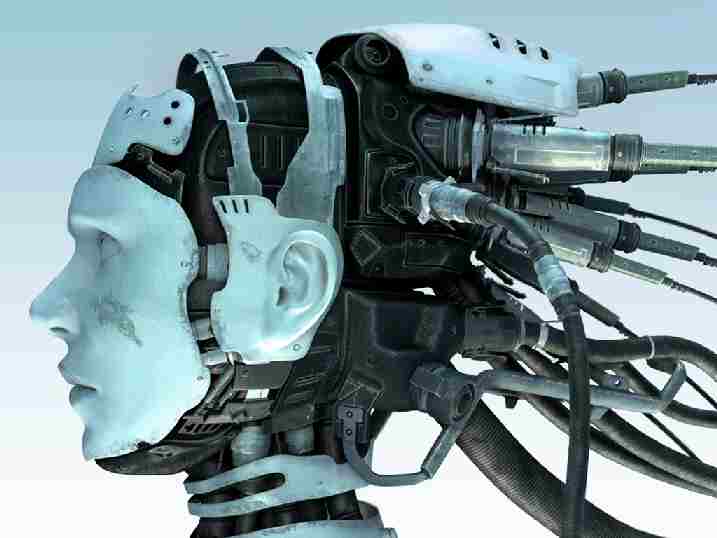
And that leads me to start wondering if that would change who we are innately. Part and pieces. Bits that can easily be assembled and replaced. Do our spirits live in our flesh? Are our bodies irrelevant to what makes us unique and aware? I guess there's only one way to know for sure . . .
Friday, July 13, 2007
Hmmmm . . . Interesting!

ChemBlancer Master!

Woohoo! I Rock! The first time through I got them all right, with the exception of one that I didn't have the most reduced formula, but the proportions were right. Hooray for math! I know it's geeky, but I have had the conversation with a small (very small) group of people about the lack of math in everyday life. There should be more math. July could be math month!
Thursday, July 12, 2007
Germanium? Silicon? Why decide!
 This is a glass fiber with a bundle of semiconductor wires emanating from it. Each wire is just 2 microns in diameter--20 times smaller than a human hair. The glass fiber is glowing from blue laser light. This image shows the wire-packed glass fiber passing through the eye of a needle.
This is a glass fiber with a bundle of semiconductor wires emanating from it. Each wire is just 2 microns in diameter--20 times smaller than a human hair. The glass fiber is glowing from blue laser light. This image shows the wire-packed glass fiber passing through the eye of a needle.Optical fiber helped bring us the Internet, and silicon/germanium devices brought us microelectronics. Optical fiber is an ideal medium for transmitting signals based on light, while crystalline semiconductors are one of the best ways to manipulate electrons. One of the current technological challenges is exchanging information between optics and electronics rapidly and efficiently. This new technique may provide the tools to cross the divide. Hooray for semiconductors!
Silicon is rarely found in nature in its uncombined form. In fact it is amazing how rare native silicon is with 25.7% of the Earth's crust being silicon. Silicon, binds strongly with oxygen and is nearly always found as silicon dioxide, SiO2 (quartz), or as a silicate (SiO4-4). Silicon has been found as a native mineral only in volcanic exhalations and as tiny inclusions in gold.
Of growing interest in rock shops, however, are laboratory-grown silicon boules. Most such specimens are end fragments or flawed discards from the integrated circuit industry. Silicon boules are grown (pulled) from a molten state from a seed crystal, in such a way as to produce a single large crystal which must be completely without crystal defects, or the entire boule must be discarded. Modern techniques can create a single crystal several feet long and up to 10 inches in diameter. These large crystals are sliced into very thin wafers, upon which complex integrated circuits can be etched. The unused parts of the boule are often saved, and used as paperweights or sometimes cut into bookends or other decorative items.
The word silicon (which is taken from the latin word for flint) can be confused with other terms. Silicate (SiO4-4). Silicates are minerals whose primary cation is the SiO4-4 ion group. Another confusing term is silica. Silica is a term used by geologists for SiO2 or silicon dioxide in any form whether it is in the form of quartz, or any of the Quartz Group members, or as a segment of the chemistry of a silicate, or even as silicon dioxide dissolved in water. A geologist might use the phrase, "The magma was rather poor in silica." Indicating an SiO2 content that was lower than expected. Yet another term is silicone. Silicone is a synthetic polymer that is made of silicon, carbon and oxygen and has many medical and some industrial purposes.
GERMANIUM
This is a lustrous, hard, silver-white metalloid. Germanium forms a large number of organometallic compounds and is an important semiconductor material. Germanium has the same crystal structure as diamond. Being a semiconductor, it's electrical properties between those of a metal and an insulator. In its pure state, this metalloid is crystalline, brittle and retains its lustre in air at room temperature. It is one of the few substances that expands as it solidifies. The oxide form, Germanium dioxide, also has the unusual property of having a high refractive index for visible light, but transparent to infared light.
Tuesday, June 26, 2007
My Colorful Cupboard

Luminescence

Triboluminescence is phosphorescence that is triggered by mechanical action or electroluminescence excited by electricity generated by mechanical action.
Beryllium Sphere Activate!

Friday, June 15, 2007
Alchemy, yearning

TOYS

Iodine, my halogen of choice
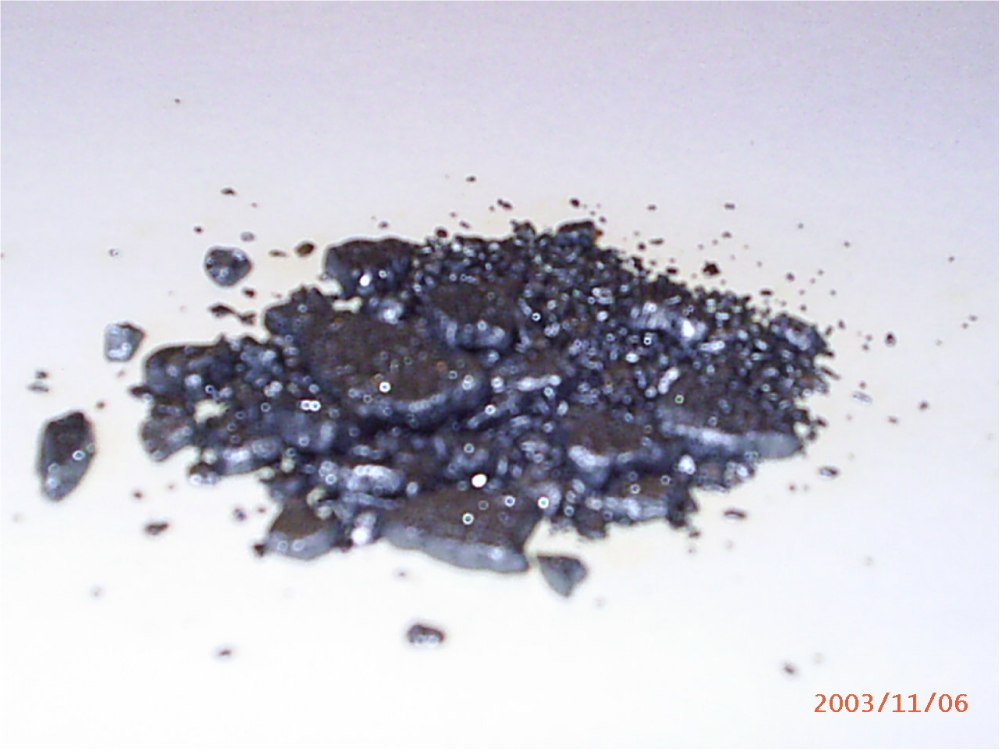
Friday, June 8, 2007
A mole?

Avogadro's Hypothesis

Helium, oh noble helium
 This image of the active Sun was made using ultraviolet light emitted by ionized Helium atoms in the Solar chromosphere. Helium was first discovered in the Sun in 1868, its name fittingly derived from from the Greek word Helios, meaning Sun.
This image of the active Sun was made using ultraviolet light emitted by ionized Helium atoms in the Solar chromosphere. Helium was first discovered in the Sun in 1868, its name fittingly derived from from the Greek word Helios, meaning Sun.Wednesday, May 30, 2007
Atom Economy

Catalyst of the week! Palladium (Pd)
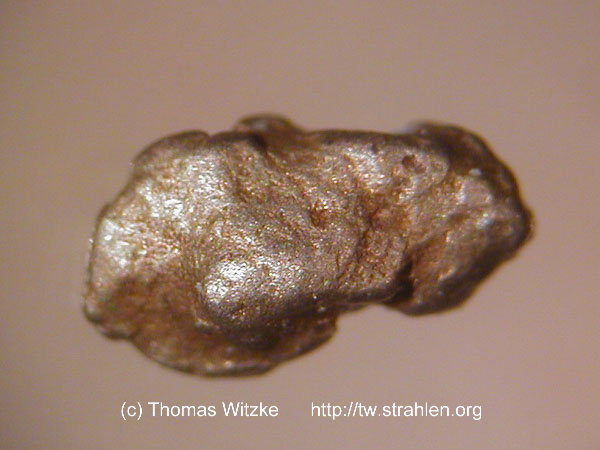
Palladium (Pd) has an atomic number of 46 and an atomic mass of 106.42. It's melting point is 1560 °C and it's boiling point is 2927 °C. Palladium, along with platinum, osmium, ruthenium, and rhodium form a group of elements referred to as the platinum group metals (PGM). Palladium is a lustrous silver-white metal. At ordinary temperatures it is strongly resistant to corrosion in air and to the action of acids. It forms many compounds and several complex salts. Palladium has a great ability to absorb hydrogen (up to 900 times its own volume).
When it is finely divided, palladium forms a good catalyst and is used to speed up hydrogenation and dehydrogenation reactions. Because of its corrosion resistance, a major use of palladium is in alloys used in low voltage electrical contacts. Palladium is used extensively in jewelry-making in certain alloys called “white gold.” It may be alloyed with platinum or substituted for it. It is used in watch bearings, springs, and balance wheels and also for mirrors in scientific instruments.
Palladium is nowadays more and more used in electrical appliances such as wide screen televisions, computers and mobile phones, in the form of tiny multi-layer ceramic capacitors, of which more than 400 billion are made each year.
For use in dentistry it is alloyed with silver, gold, and copper. Palladium salts are used in electroplating.
Most palladium is extracted as a by-product form nickel refining. It is found as the free metal associated with platinum and other platinum group metals in Australia, Brazil, Russia, Ethiopia, and North and South America, as well as with nickel and copper deposits (from which it is recovered commercially) in Canada and South Africa.
Palladium is regarded as of low toxicity, being poorly adsorbed by the body when ingested.
Palladium compounds are encountered relatively rarely by most people. All palladium compounds should be regarded as highly toxic and as carcinogenic.
Palladium has little environmental impact. It is present at low levels in some soils, and the leaves of trees have been found to contain 0.4 ppm. Some plants, such as the water hyacinth, are killed by low levels of palladium salts but most plants tolerate it.
Wednesday, May 23, 2007
Water Concepts
 It was neat to look at the site after having discussed many of the aspects of water in class. I think we did a good job of translating that 3D image into an understandable concept without having the 3D image to reinforce the idea. It was wonderful to have the opportunity to look at an image with a little more perspective. Showing the atoms lined up, with the polarity of the molecules turning them in a certain way.
It was neat to look at the site after having discussed many of the aspects of water in class. I think we did a good job of translating that 3D image into an understandable concept without having the 3D image to reinforce the idea. It was wonderful to have the opportunity to look at an image with a little more perspective. Showing the atoms lined up, with the polarity of the molecules turning them in a certain way.I tried looking at the QuickTime shows on the chemical structures and atomic orbitals, but it kept trying to get me to buy a CD, so I didn't really see anything on that site.
Carbon Structures
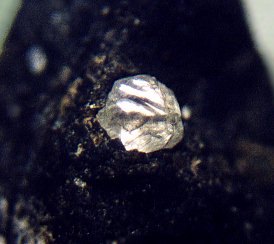
Iridium
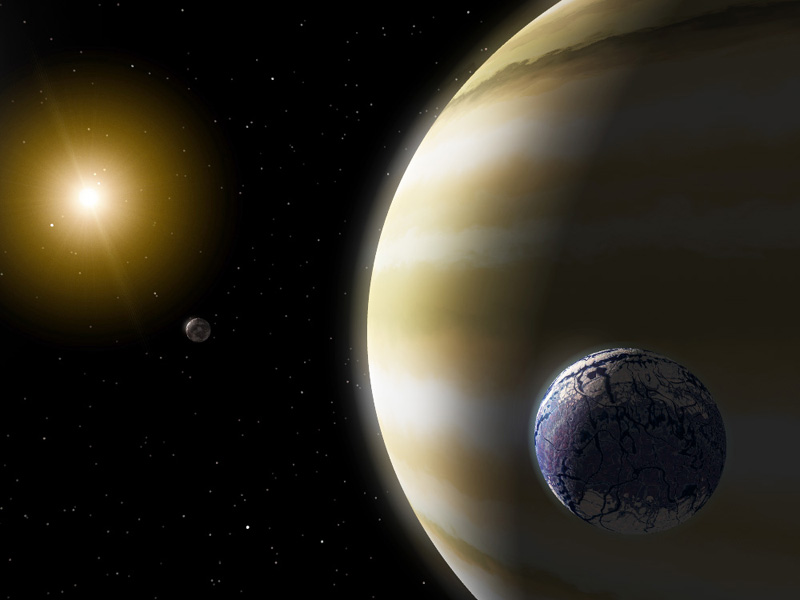
Tuesday, May 15, 2007
Review if ATOMIC PROTERTIES MENU

I think what shook me had to do with unfamiliar terms, like moles (not furry rodents) and kilojoules per mole (even less to do with rodents). My brain wanted to tuck tail and run from such thought twisting concepts. Certain things led me to feel like I was getting it. Like, the talk about electrons further from the nucleus being easier to pull away. That made sense because distance can decrease the pull of the energy. That made sense to me, especially since there are those orbits between the outer layer and the nucleus which are neutralizing some of that pull with their own negative charge. It also made sense that an outer layer with two electrons would be easier to pull away than one. Each of those two electrons is having to share that orbital with each other, they don't wanna share, and then they repel each other. So, repelling each other and having that distance and shielding from the nucleus, that makes sense that they would be easier to pull away than the one by itself.
Right after that it started getting fuzzy. The concepts were lost on my poor brain and questions like: Why the drop between groups 5 and 6 (N-O and P-S)? failed to have any meaning for me at all. I think it was just too much at once. These ideas are a lot to take in, and I think that I need time in between to absorb info. Class was good, we read, we discussed, had q&a, and then moved on. Reading it straight through doesn't seem to work well for me. I want it explained in several different ways with pictures and examples and cartoons and anything else I can get.
Ozone, what do folks know?
Only one person talked about ozone outside of the stratosphere, and that was to discuss the strange sounding "ozone therapy". With a little investigation, I found that ozone therapy is being used in many different ways to handle many different ills. It is used to inject and infuse into people because it apparently increases the amount of antioxidants a person produces, it is also used as an antibacterial and anti fungal, an anti-a-lotta-stuff I guess. They are even selling ozone producing machines to have in your home so you can combat your many ills. That seems like a bad idea to me, people adding this unstable ozone, which we know to be toxic, into their homes for . . . ? It isn't clear EXACTLY what people are doing with all this ozone that they can make at home. Adding to the smog problem? Exposing themselves to a toxic gas? This whole idea is a little unsettling. None of the ads I saw said anything about ozone being toxic. It this incredibly irresponsible of the people creating and distributing these products?
Arsenic: My Element of the Week
As, having an atomic number of 33 and an atomic mass of 74.92160 . . . So that's 33 protons, 33 electrons and about 42-ish neutrons. Let's see if I can remember how to do this.
As = 1s22s22p63s23p63d104s24px14py14pz1
or
As = [Ar]3d104s24px14py14pz1
Okay, I think that's right.
So what else do we know about As? It's allotropic, which means that it can be the same molecules looking and maybe acting different depending on how those molecules are arranged. It can be yellow and soft, waxy, but only if the molecules are arranged as a tetrahedron. It can also be brittle and grey, metallic, when arranged another way, and much more dense. It's a little unstable and lends itself to converting and changing itself in many different ways. It is easily dissolved in water, and when dissolved becomes a powerful acid. It can be heated and turned into a gas, also easily. In addition to being used as a poison, it was also used as a stimulant and medicine. It resembles phosphorus, which is directly above As on the periodic table.
Over the years it has had a patchy reputation and has gone in and out of favor in it's different incarnations. Sometimes as a food additive, sometimes as a recreational drug or medicine. We all know of it as a poison, and it has been widely used as herbicides, pesticides, and insecticides. All in all, I can say that it seems to have many uses, and should be handled with respect and caution. After all, it is the Poison of Kings, and the King of Poisons.
Wednesday, May 9, 2007
Periodic Tables
I checked out the game that has you trying to match the symbol for the element they list. You can choose hard, medium, and easy. Surprisingly enough I got 10 out of 10 for the easy. The medium blew me away and I struggled with a 5/10 and the hard wasn't too bad and I got out of that with a 6/10. I mostly guessed.
Quiz
I obviously have no idea how to calculate the atomic weight of something and what the protons and electrons have to do with it. I have the faintest of foggy memories in which an instructor from long ago told me and explained how these things could be determined. It didn't stick.
Interactive
I should have looked at this one first. I got a reminder of how to read the periodic table, at least.
Quiz
1. Classify the following as either a chemical or physical change.
Burning wood - would be a chemical change, since it changes the chemical compounds
Crushing a rock - would be a physical change, because even in small pieces, it's still a rock
Dissolving sugar in water - my intuition was correct. I thought it was a physical change because mixing sugar and water gives you sugar water, not something new or different.
The rusting of iron - is a chemical change. The interaction between iron and water or whatever gives you a whole new thing, rust!
2. Classify the following as to whether or not they are pure substances or mixtures.
milk is a mixture of several things, water, fat, and sugars mostly
table salt I thought was pure, but table salt is mostly iodized and has anti caking agents
sugar I figured pure
steel I thought pure, and the answer said a homogeneous mixture of iron and carbon. I guess because it is a mixture that cannot be separated.
3. A cup of black coffee is considered to be __?__ and a/an __?__ substance.
(b) homogeneous…..impure I guessed homogeneous and impure because is is a mixture of coffee and water that cannot be separated
4. The boiling of water is considered to be a __?__ change and the temperature at which water boils is considered to be a __?__ property.
(d) physical…..physical The change of boiling water is a physical change since chemically, it hasn't changed. The temp at which water boils is a physical property, since it is not a chemical.
The Cultural Influence of Chemistry: Week 1
The way it looks to me, we don't have a very good understanding of the effects of natural disasters and global warming. It may have something to do with the fact that no one seems to be concerned with those effects until they're right on top of us. I suppose our understanding is increasing every day as a direct result of the effects showing up and making themselves available for study. We are able to see the life cycle of our food crops interrupted and affected by global warming and increased carbon dioxide and ozone. We can observe that the sea level is rising due to the melting of large masses of ice and we can watch as land is swallowed by the rising sea. We can see the currents changing due to that same influx of fresh water into the sea and how the difference in salt levels and temperatures are redirecting those currents, in turn changing the way our weather works. We will understand the effects as they occur and change the way our planet operates.
How do we find a balance between the needs of agriculture and the impact on our planet?
That question seems like asking a cat how to get to the grocery store. There is no quick fix, at least not at this point. There are waaaay too many people living beyond what they "need". How can you force that many people to change the way they live? And in time to repair damage and restore the planet to a state of health that can sustain our vast numbers? No, the amount of land and ocean that can produce sustainable food is not large enough, nor strong and healthy enough to feed the number of people living today. That whole 5% thing needs to be increased. People's huge lawns need to turn into their gardens that will feed their families and neighbors. Communities need to start taking care of their own food needs. Everyone needs to pitch in, in order for us to increase the amount of food produced without hugely increasing the amount of fuel used and over-taxation of soil and sea.
Should there be more effective control of the pharmaceutical industry?
That feels like a loaded question. There should be an "ethical" force which can watch and monitor the chemicals that are being sold to us as "safe" to ingest and generally be exposed to. At the same time, these companies and this FDA can also use these control measures to start making rules and laws about herbs and natural medicines. Vitamins, herbs, food . . . they're already trying to take those away from us using doctors and "approved medical personnel" as excuses to take our health care out of our own hands. Soon, getting your vitamin C or herbal throat drops are going to be items that have to be prescribed for you or found on the black market. I would love to say that yes, of course there should be some control over the pharmaceutical industry to make them responsible for the products they put out and deem "safe". I believe that things are not that simple and that when you start exerting control and making rules and restrictions, freedoms can start becoming a vulnerable grey area that people aren't afraid to take advantage of.
Tuesday, May 8, 2007
This is me

What can I say? You gotta do what's right. I always have a rough time describing myself. I try not to judge, I try to be open and to accept what is with clarity and a sense of purpose. I try not to yuck any ones yum. I try to be a good person and I think that most of the time I get it right. I'm in school studying TCM because I feel like it's the right thing to do and the best way to contribute to my community, family and friends. I'm from around here, a little south. Things are generally very, very good and I'm glad I'm around during these extreme and volatile times.

